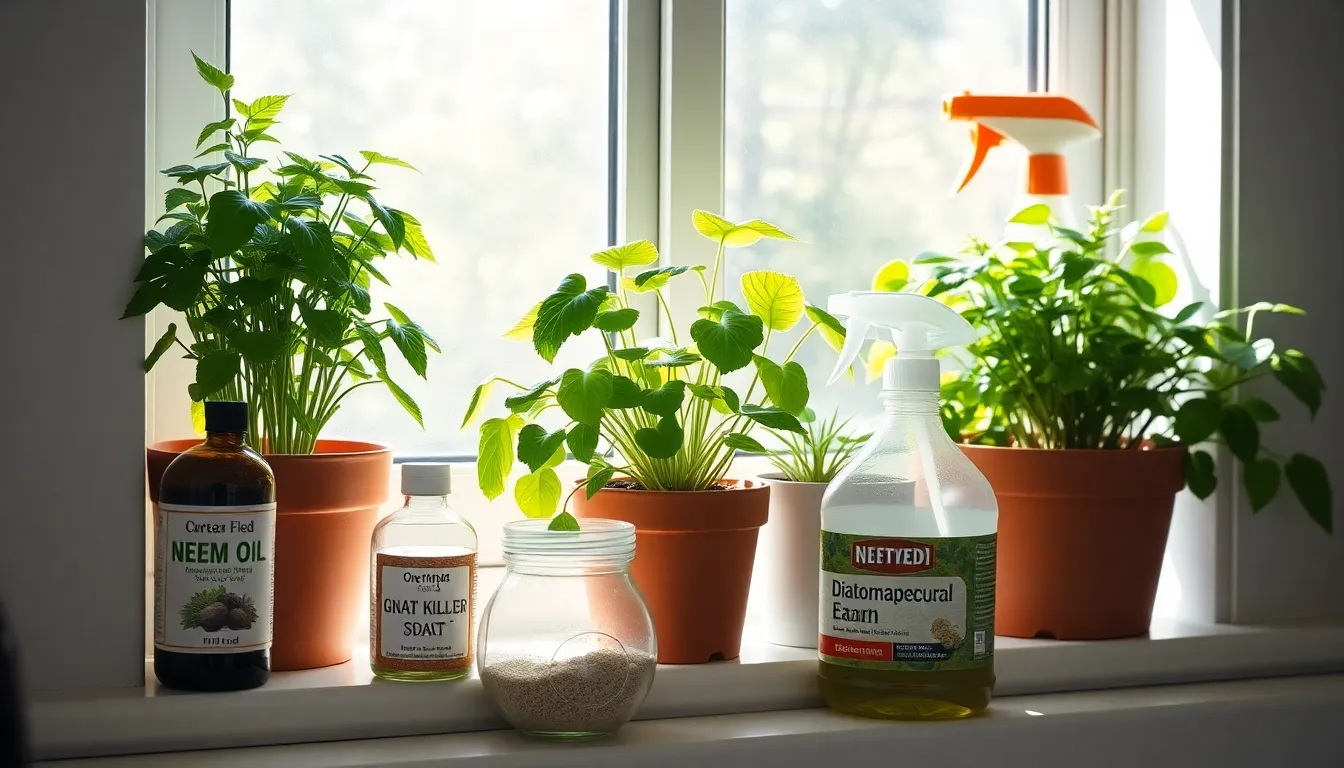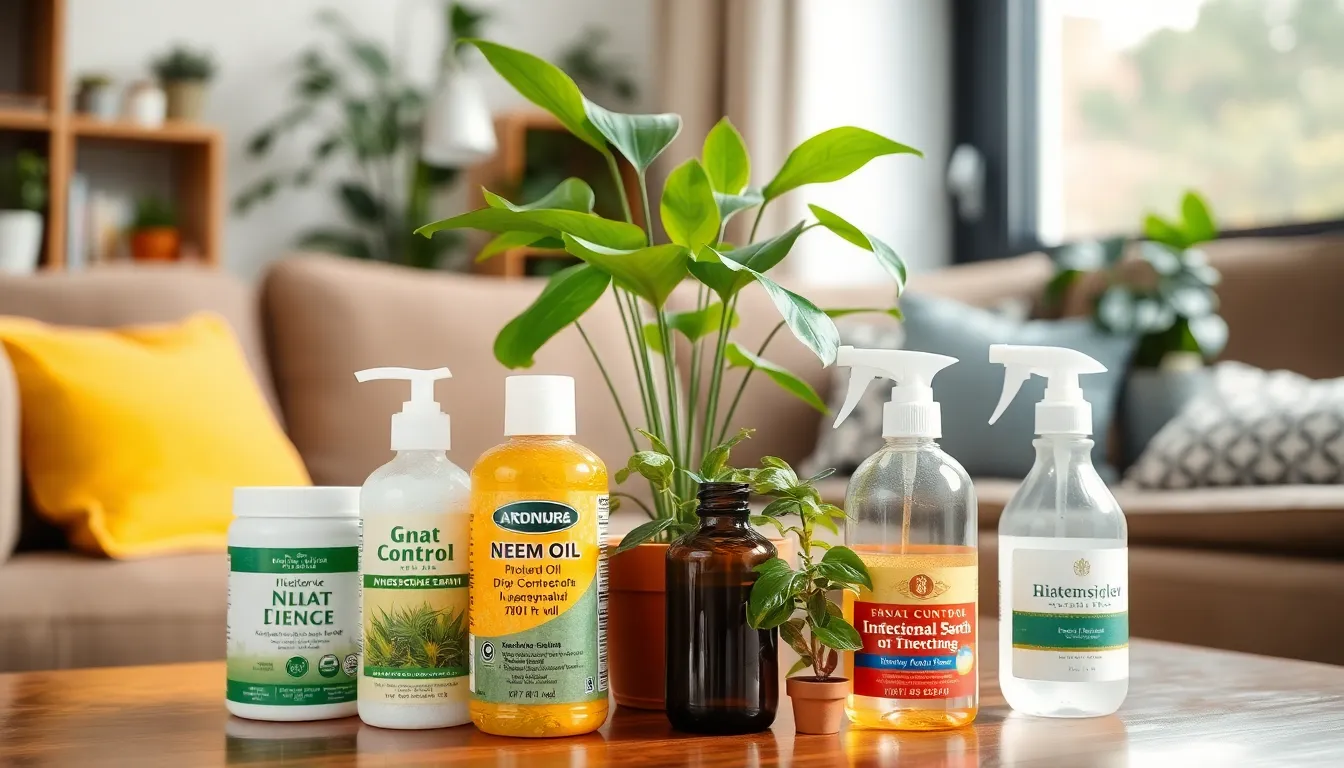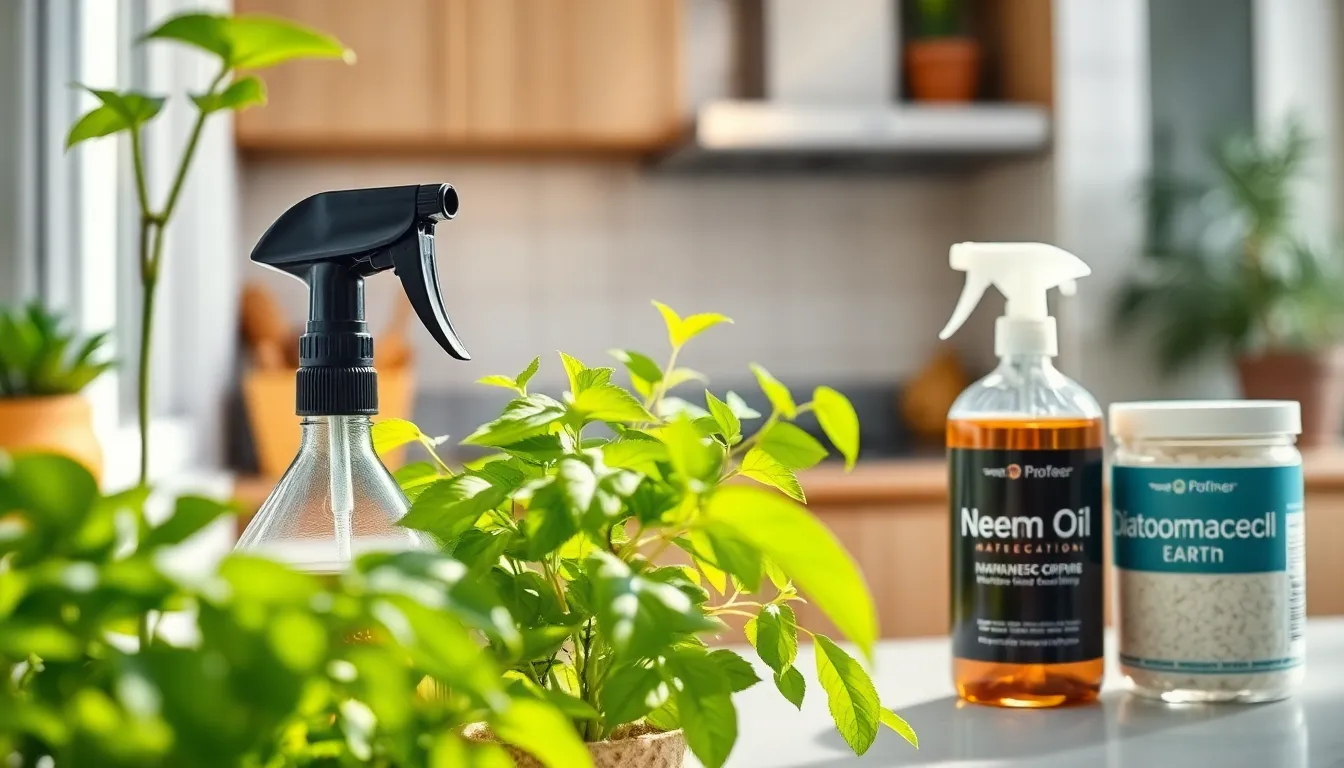Indoor plants are a breath of fresh air—until those pesky gnats crash the party. These tiny invaders can turn a vibrant green oasis into a buzzing nightmare. If you’ve ever found yourself swatting at these uninvited guests while trying to enjoy your favorite fern, you know the struggle is real.
best gnat killer for indoor plants
Gnats create significant challenges for indoor plant enthusiasts. These small pests not only disrupt the aesthetic of a home garden but also threaten the health of plants.
Common Types of Gnats
Fungus gnats are the most common indoor pests, typically found in moist soil. They thrive in overwatered plants and can cause root damage. Shore flies, another type, resemble fungus gnats but are usually less harmful. These gnats prefer decaying organic matter and emphasize sanitation issues. Finally, fruit flies may occasionally invade indoor plants, attracted to ripe or decaying fruits nearby.
Identifying Gnat Infestations
Noticing tiny flying insects around plants often indicates a gnat problem. Signs of gnat infestations include adult gnats hovering near soil or plants. Yellowing leaves or wilting can signal root damage caused by larvae, which live in the soil. Sticky traps can effectively catch these insects and confirm an infestation. Inspecting soil moisture levels often reveals signs of overwatering, a common factor in gnat attraction.
Best Gnat Killer for Indoor Plants



Gnat control for indoor plants involves a range of effective products. Selecting the right gnat killer ensures the health of plants and the comfort of the home environment.
Organic Options
Neem oil serves as a popular organic solution. Derived from the seeds of the neem tree, it disrupts gnat life cycles and repels pests. Another effective choice involves diatomaceous earth, which physically damages gnat exoskeletons, leading to dehydration. Garlic spray also proves useful; its strong scent repels many insects, including gnats. Additionally, introducing beneficial nematodes into the soil attacks gnat larvae directly and reduces their population over time.
Chemical Options
For quick action, insecticidal soaps are highly effective against adult gnats. These soaps target soft-bodied insects, breaking down their protective coverings. Pyrethrin-based sprays work similarly by providing instant knockdown to adult gnats, ensuring rapid results. Another potent chemical option is the use of larvicides, which eliminate gnat larvae and prevent future infestations. Always read labels to ensure safe application near indoor plants and follow guidelines for proper usage.
How to Effectively Use Gnat Killers
Using gnat killers effectively requires understanding application methods and adhering to safety precautions for optimal results. Applying the right techniques can significantly reduce gnat populations while ensuring plant health.
Application Methods
Spraying remedies like neem oil or insecticidal soap requires even coverage over the entire plant, especially the undersides of leaves. Using diatomaceous earth involves dusting it lightly onto the soil surface, effectively targeting larvae. Garlic spray can be applied directly on exposed foliage, repelling adult gnats. Sticky traps can also be strategically positioned near plants to catch flying adults. Beneficial nematodes are introduced into the soil, actively seeking out gnat larvae. Regular monitoring after application helps assess effectiveness and indicates whether a follow-up is necessary.
Safety Precautions
Reading product labels ensures awareness of specific ingredient compositions and application recommendations. It’s essential to test sprays on a small plant area before full application to avoid damaging foliage. Wearing gloves while handling pesticides protects skin from irritation. Keeping pets and children away from treated areas prevents accidental exposure. Ventilating the room when using chemical sprays enhances air quality. Storing all products in a safe place minimizes risks associated with accidental ingestion.
Preventing Gnat Infestations
Preventing gnat infestations requires attention to plant care and environmental conditions. Implementing proper practices can significantly reduce the likelihood of attracting these pests.
Proper Watering Techniques
Overwatering creates a favorable environment for gnats. He or she must ensure that soil drains well and dries out between watering sessions. Watering early in the day allows time for moisture to evaporate. Checking the soil moisture level before watering can prevent excessive dampness. Using pots with drainage holes promotes effective drainage. Adjusting the watering schedule based on seasonal changes aids in maintaining optimal soil conditions.
Maintaining Plant Health
Strong plants naturally resist pests, including gnats. Select healthy plants and inspect them regularly for predators or signs of distress. Fertilizing appropriately boosts growth and resilience. A proper balance of nutrients supports plant function and reduces vulnerability. Ensuring adequate light exposure lets plants thrive and limits gnat attraction. Pruning dead or dying leaves prevents decay that may attract pests. A clean growing environment, free from debris and decaying matter, minimizes potential gnat breeding sites.

